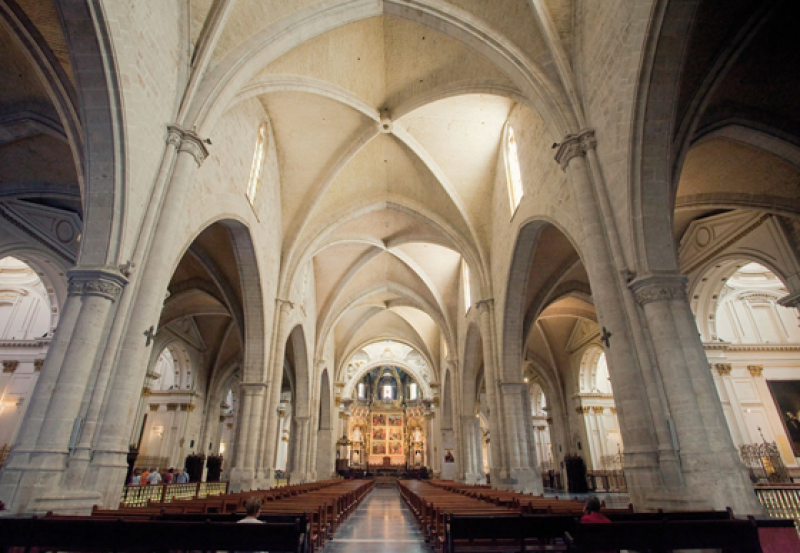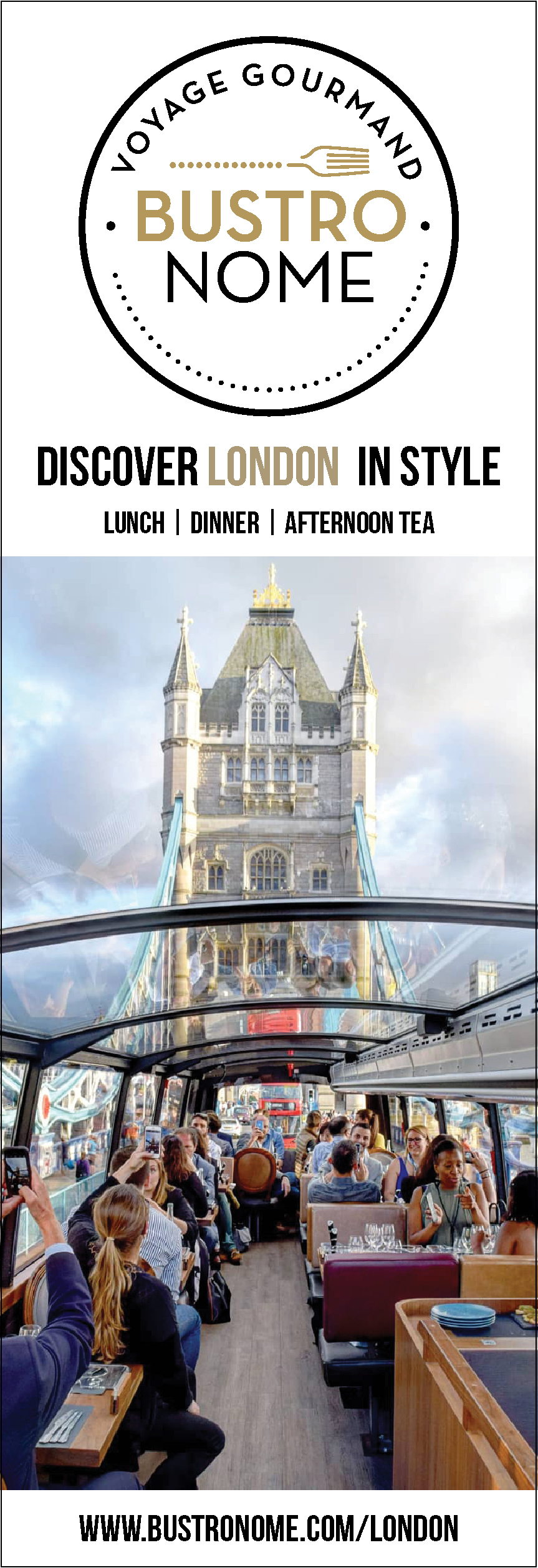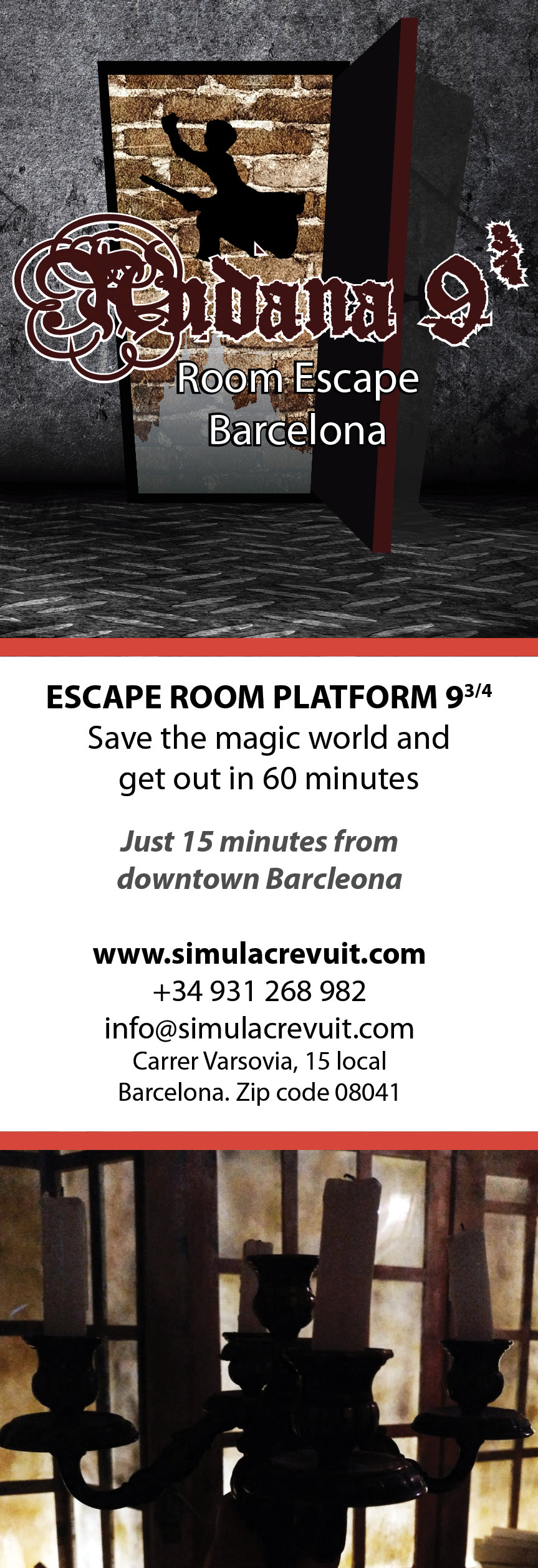
Exploring Valencia
By Laura Blake
Nestled on the east coast of Spain, the country’s third largest city is a leading cultural destination that can easily rival the likes of Madrid or Barcelona, thanks to its intoxicating mix of culture, cuisine and local character.
Valencia has a fascinating past. Founded by the Romans in 138 BC, the city has passed many hands throughout history – from the Romans to the Visigoths, Valencia was then ruled by Muslims until 1238, when King James converted the city to Christianity. However, the legacy left behind by Arabic rule still runs deep, and can still be traced in Valencia’s food, culture and art today.
Between the 14th and 16th Centuries, Valencia flourished. Now known as the city’s Golden Age, Valencia enjoyed huge financial, artistic and political gains; as the birthplace of the silk trade, the city quickly became the commercial centre of Europe. However, the city centre itself remained comparatively small up until the late 19th Century when it underwent an urban transformation – surrounding what it now known as the historic centre, 19 districts were formed, and the flood-prone river on the outskirts of town was diverted, allowing the dried river bed to be converted into a beautifully flowing park that winds through the heart of the city. From the mid-90s onwards, Valencia began to tempt tourists seeking an alternative experience of a Spanish city; rapid development transformed Valencia from an unassuming industrial centre into a destination teeming with cultural possibilities and a vibrant atmosphere.
Culture in Valencia
With a penchant for grandiose buildings and an artistic legacy difficult to rival, Valencia is a cultural haven. The city boasts 35 incredible museums: a popular favourite remains the Museum of Fine Arts San Pío V, the second largest art gallery in Spain (after The Prado in Madrid), which houses a fascinating collection of Gothic altarpieces in addition to impressive dedications to the masters Goya and Soralla. Traditional Spanish art can also viewed in the National Ceramics Museum – housed in inside the Baroque palace of the Marquis de Dos Aguas, the building remains the best example of Baroque architecture in Spain. However, for a more contemporary foray through Valencia’s arts scene, visitors should take the time to explore the IVAM; opened in 1989, it served as Spain’s first centre dedicated to modern art and houses both permanent and temporary collections of 20th Century art and photography.
Notable museums include The Valencia History Museum, the L’ Iber Museum (home to the largest collection of toy soldiers) and L’ Almoina; declared Europe’s second best museum in 2009, it was built directly on Valencia’s old city ruins, and the Roman Forum found here dates back to 138 BC. However, visitors need not confine themselves to museums in order to understand the cultural legacy of Valencia – the city’s most beloved architectural wonders include the modernist Central Market, The futuristic City of Arts and Sciences complex, the Gothic Valencia Cathedral and The Silk Exchange, protected by UNSECO World Heritage Site status.
Music has an important part to play in Valencia’s cultural scene. The city’s music scene can be divided into traditional and contemporary, and each is celebrated in its own right; Valencia is home to two outstanding concert halls, the Palau de les Arts Reina Sofia opera house and the Palau de la Musica, which incorporates a concert space, cinema and exhibition hall. Valencia is also the host city of the prestigious USA Berklee College of Music in Europe, the college’s first international campus.
Introducing Children to Culture
Valencia offers a packed itinerary of cultural activities aimed specifically at younger travellers. Highlights include the Palau de la Música programmes, which encourages children to engage with music and instruments, the Palau de les Arts activities (in which children are tasked with becoming detectives) and the Oceanografic’s Animal Passport initiative, in which children can become a dolphin trainer for the day (during July and August children will also have the opportunity to sleep with the sharks!) Many of the city’s museums, including The Príncipe Felipe Science Museum, host workshops and exhibitions tailored to broadening young minds. When not exploring museums, the Cabecera Park is a wonderful open space that is ideal for bike rides and sailing across the lake, whilst the Las Arenas and Malvarrosa Beaches are perfect for more relaxed activities such as wading and kite flying.
Turismo Valencia has created VLC Natural Xpress, a pass that offers entry to the most popular tourist attractions, such as Bioparc and the City of Arts and Sciences, as well as unlimited use of the Tourist Bus. This product can be adapted to the duration of each tourist’s stay and is available to purchase in the airport, Joaquin Sorolla Station, Plaza de la Reina and the City Hall Tourist Information offices, as well as online. The Family Card is also available online, allowing families to take advantage of the Valencia Tourist Card and enjoy unlimited use of the public transport, as well as discounts in museums, tourism services and restaurants.
Luxurious Lifestyles
Although wonderfully suited to family holidays, Valencia was surely made for those who appreciate the finer things in life. Luxurious five star accommodation includes the boutique Hospes Palau de la Mar, the historic Hotel Caro and the centrally located SH Valencia Palace, whilst the city also boasts a number of top spas: choose from the historic setting of Balneario La Alameda, the wellness dedicated Caroli Health Club at The Westin Valencia or Las Arenas Hotel Spa, the only Luxury five star hotel of the Santos Chain in Valencia.
For those who prefer relaxing outdoor pursuits, Valencia is a haven for golf and, with six fantastic clubs to choose from, fans of the sport will certainly be in their element. El Bosque Golf and Country Club is considered the stand out Valencian course; designed by Robert Trent Jones Senior, the club features a challenging 18 hole course, an elegant club house , practice facilities, pool and restaurant.
The Marina Real Juan Carlos I is at the heart of high-class experiences. Located just a few minutes outside of the city centre, (and especially built to host international events like the 32nd and 33rd America’s Cup and the European F1 Grand Prix) the marina does not simply providing outstanding facilities for yacht owners and charters, (including two birthing zones, separate superyacht facilities, Wi-Fi, water and electricity and security services) but also boasts eight chic restaurants and bars, dedicated event space and a packed events calendar.
Valencia is also home to a number of high end retail shops, many of which are incredibly open all year round (expect major public holidays.) the city’s major ‘shopping zones’, located in Barrio del Carmen, Plaza del Ayuntamiento, Eixample and the City of Arts and Sciences, are home to some of the most luxurious and fashionable brands, including Lladró, Loewe and Rafael Torres Jewellery.
Dining in Valencia
Valencia is a paradise for food lovers, with some 2,000 bars, cafés and restaurants offering a variety of local cuisine. More importantly, Valencia is the proud birthplace of paella, and a number of restaurants compete to offer visitors the best interpretation of this Spanish classic.
After paella, of which the first written document dates from the eighteenth century, came tapas, and one of the best places to enjoy these traditional appetisers is at Casa Montaña, one of the oldest and most famous restaurants in the city. Opened in 1836, it passed through various hands until it reached those of Emiliano Garcia, who rose to the top of the cream tops Valencia. Politicians, businessmen, intellectuals and artists go through their daily for 'conversation and to relive the pleasure of the senses.'
Nearly 60 years later saw the opening of La Pepica, another legendary haunt of Ernest Hemingway, Orson Welles and the Spanish Royal Family during their stay in Valencia. Gradually the simple gastronomic map of the city is expanding into the current complete and complex culinary map. Choosing from Michelin Star restaurants, paella, vegetarian, fusion cuisine with Valencian roots, or tapas is no easy task, as quality and creativity are present in all of them.
The land that invented the paella is now also home to five Michelin Starred restaurants: Riff, Vertical, La Sucursal, Ricard Camarena and El Poblet, whilst Repsol Suns (Bestowed by the Repsol Guide) have been awarded to 18 restaurants. For a more unique culinary experience, visitors should visit such eateries as Samsha, Askua and Kaymus, whilst more traditional fare can be found at El Canyar, El Timonel, La Marcelina, Les Graelles and Bodega Casa Montaña. An additional highlight of the Valencian dining scene is Barraca de Toni Montoliu; set in the heart of the huerta (green belt) diners can indulge in a fantastic evening as the local cuisine is brought from the huerta right to the table. Of course, if you’d rather try your hand at creating your own Valencian dishes, the Central Market (one of the oldest in Europe) serves as the cathedral of local farm and dairy products, with around 400 stalls featuring produce brought fresh from the surrounding farms, gardens and Mediterranean Sea.
A Modern Way to Enjoy Tradition
Valencia is truly the culinary laboratory of Spain, and numerous initiatives have been launched to simultaneously preserve the rich culinary history of Valencia and catapult the Valencian dining scene into the 21st Century. Founded with the intention to preserve the authenticity of paella, the Wikipaella initiative serves as a portal of authentic recipes, the best ingredients to use and recommended restaurants. There has also been a successful project to market gourmet canned paella such as Paella Artesanas Amparín; made in collaboration with the Food Design research team from the Polytechnic University of Valencia, it is a unique combination of traditional cuisine and innovation.
For budding chefs, courses are offered by Ricard Camarena Lab, Riff, the School of Rice and Paella and Valencia Club Kitchen. And for those who need to do thorough research before entering the dining room, businesses Turiart, Libertours, Valencia Guias, Arroz and Tartana and Discovering Valencia all offer gastronomic routes followed by tastings and cookery courses.
The MENUS VLC initiative heralded in a new way of dining in the city, allowing all visitors to enjoy Valencian cuisine at fixed prices. Comprising of a set menu of seasonal dishes and available in the city’s best restaurants, these menus include a starter, a main course of typical Valencian cooking, and a dessert, at a price of just At 15€ for adults and 12€ for children (aged 12 and under.)
Valencia Cuina Oberta Restaurant Week was first held in 2009 and quickly grew to become a much anticipated twice-annual event. Featuring the participation of over 60 local restaurants, visiting gourmands have the opportunity to sample the offerings of the city’s best chefs at reasonable prices. Restaurant Week is usually held in June and November – for more information, simply visit the website.
A Dish to Delight In
Those travelling to Valencia should not leave without first sampling its famous Paella. With ancient roots that can be traced back to the Albufera lagoon of Valencia, Paella may be considered Spain’s national dish but for Valencians, it is an identifying symbol of their unique heritage.
Paella (a derivative of the old Valencian word for pan) was brought to the city during Moorish rule. During this time, farmers vastly improved the old Roman irrigation systems along the Mediterranean coastline, resulting in greater rice production. Consequently, rice casseroles began to feature heavily on local dining tables, particularly during family gatherings and religious holidays, cementing the custom of rice consumption in Spain. After becoming a staple food during the 15th Century, many then began to flavour their rice dishes with vegetables, beans and dried fish, giving way to the rise of paella.
Although paella was traditionally made with meats such as chicken, duck or rabbit, the proximity to the coast ensured that in Valencia paella was usually prepared with seafood served in the shell. During the 20th Century, paella's popularity spread past Spain's borders and as other cultures adopted paella; the dish invariably succumbed to regional influences. However, there is no other destination in the world to enjoy traditional paella than its birthplace – in Valencia it is not simply a delicious dish, but a taste of authentic culture.
A Gastronomic Tour
In addition to Paella, that favourite Valencian dish, many other regional products offer an unforgettable taste of Valencia’s history and the city’s dedication to excellent cuisine.
Rice
Rice was introduced to the city by the Arabs in the 12th Century and today, 30% of the county’s rice is produced in the province of Valencia – the Albufera Nature Reserve and the town of Sueca offer over 9,000 hectares of land dedicated to cultivation (quality is upheld by the Valencia Rice Protected Designation of Origin.) Popular varieties include Bahía, Senia and Bomba, and visitors can find Valencian rice in many delicatessens, markets and supermarkets across the city, or spend an intriguing afternoon at the Museo del Arroz, (Rice Museum) housed in an old rice mill dating from the start of the 20th Century.
Wine
The Valencia Wine Protected Designation of Origin covers 17,800 hectares of vineyards spread over four smaller regions: Alto Turia, Valentino, Moscatel and Clariano. The staggering 650,000 hectolitres of annual average production of different grape varieties results in red, rosé, white and liqueur wines from 80 different firms. Mistela, a dessert wine produced from the Moscatel grape, is very typical of Valencia and famed for its golden hue and sweet taste. The Valencia Wine Protected Designation of Origin Regulatory Council, located in the heart of the city, boasts a spectacular winery, exhibition rooms and offers guided visits and wine tastings (booking required.)
Horchata
Horchata is one of the most popular drinks in Valencia. Made from the chufa (tiger nut), it originated in Egypt but, like rice, was brought to the city by the Arabs. Tiger nuts are grown in just 16 towns in the Valencia region of L’Horta Nord, the only region where this tuber is grown. Alboraya is considered the best town to enjoy this drink, as it boasts the most horchaterías (production factories) and the Alqueria El Machistre – a dedicated museum where guests can explore the manufacturing process. Travellers can also take to the Horchata routes with Horta Viva Tour Company; visit the Mon Orxata factory and sample this refreshing drink in traditional horchata bars.
Events
A grand calendar events will ensure your time in Valencia is packed with excitement. One of its most famous annual events is Las Fallas, an internationally renowned festival held every March. A traditional celebration held in commemoration of Saint Joseph, the five day event is celebrated with processions, firework displays, and the burning of each district’s ‘falla’, a highly sophisticated papier-mâché structure affixed to a wooden structure.
La Tomatina, an annual tomato fight, draws crowds to the nearby town of Buñol on the last Wednesday of August for an energetic – and of course, messy – commemoration of an enraged food fight that first took place in 1945. There are also a number of well-preserved traditional Catholic festivities throughout the year. Holy week celebrations in Valencia are considered some of the most colourful in Spain, whilst during the Christmas holidays children can enjoy Expojove, a children’s fair held every year at the Valencia Exhibition Centre.
Aside from annual events, 2015 will mark a very special occasion in Valencia. On the last Thursday in October, the city will come together to celebrate the Jubilee for the Valencia Holy Chalice. The Vatican has authorised this celebration, in honour of the archaeological studies suggesting this Holy Chalice may indeed be authentic. This Chalice is also incredibly special for a different reason – it is the only one in the world that has been used by two Popes during two masses; John Paul II and Benedict XVI, during two different masses.
Other popular upcoming events include The Valencia Boat Show (16-18 April)the July Fair (a grand spectacle of rock and pop concerts, bullfights and the much anticipated Battle of the Flowers, held in late July) the Corrida de Toros bullfight (9 October) and the Valencia Grand Prix (the last race of the World Motorcycle Racing Championship, 6-8 November.) Click here for more information about events in Valencia.
For more information, please visit:
Website: http://www.visitvalencia.com/en/home
Email: turisvalencia@turisvalencia.es
Tel: 34 963 606 353
Fax: 34 963 606 430
Share this article:




















